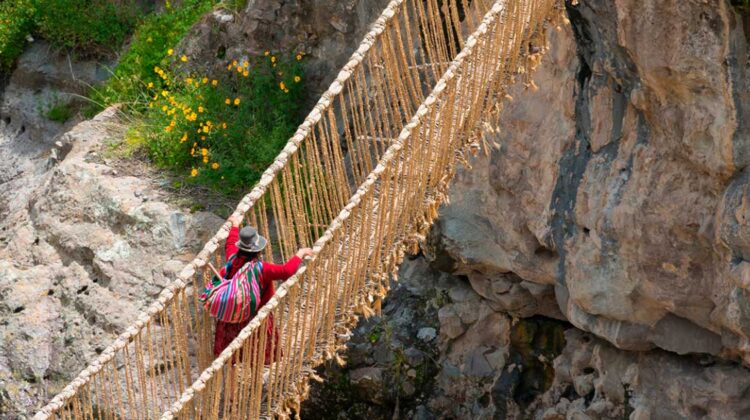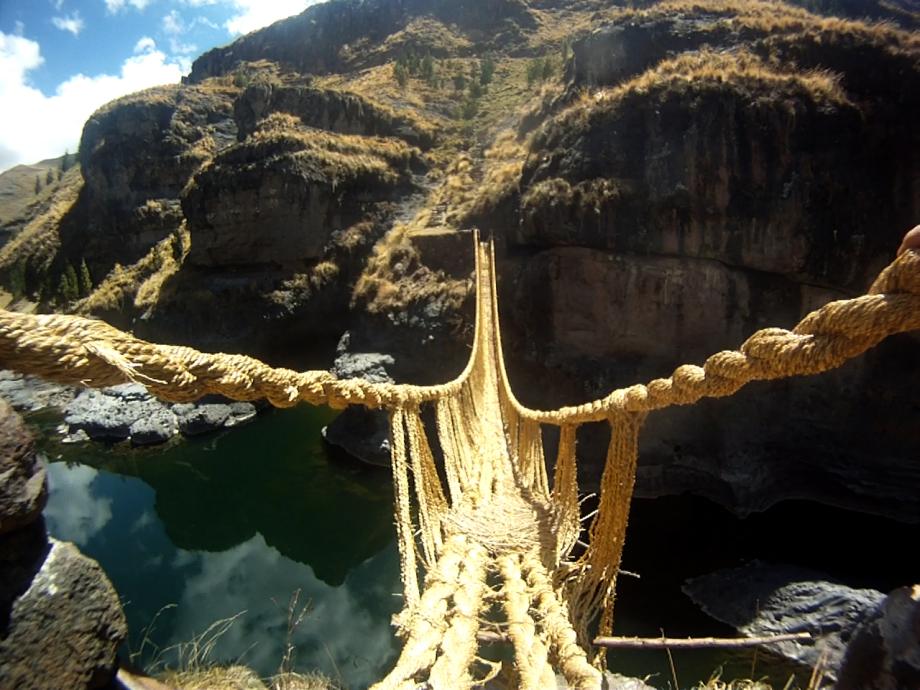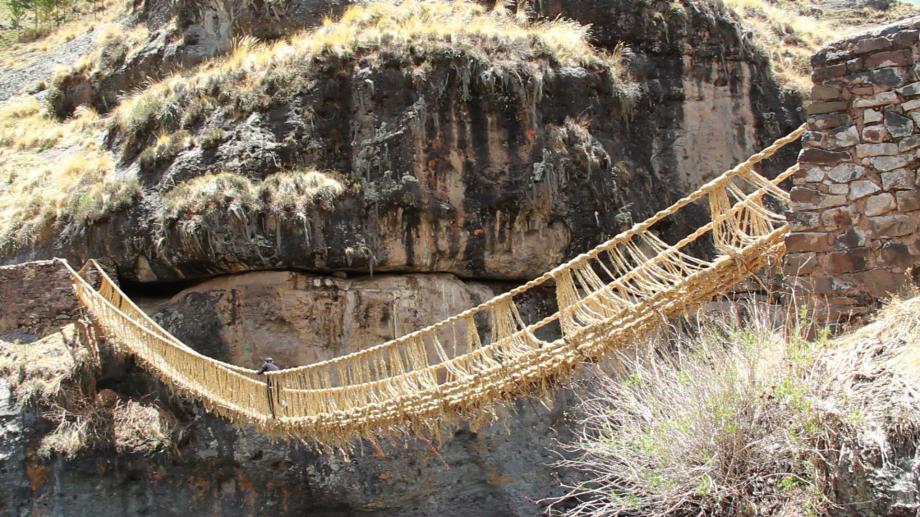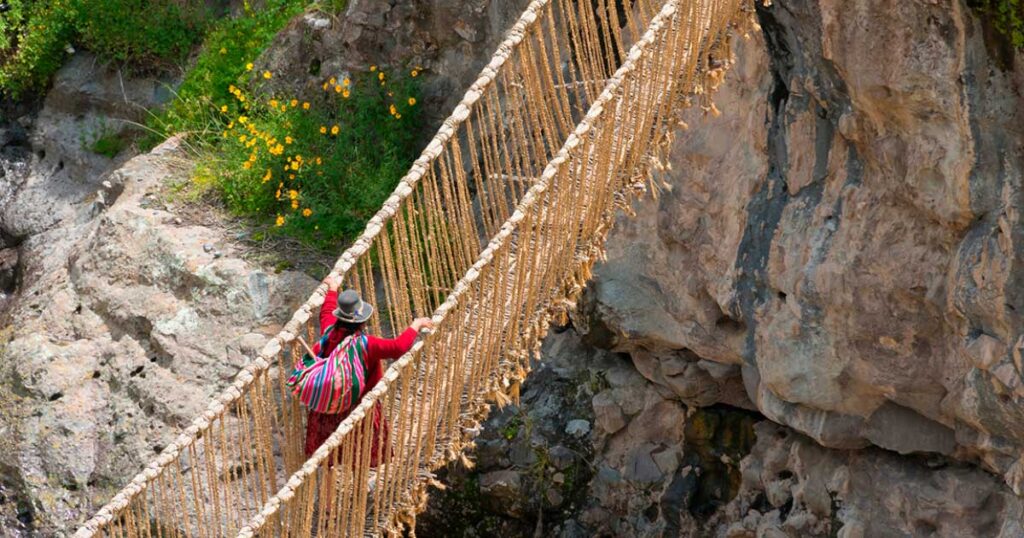
The Inca civilization, despite its astounding achievements, is often remembered for what it didn’t have. They never invented the wheel, never figured out the arch, and never discovered iron. Yet, they were masters of another craft – fiber. The Incas harnessed the power of nature to build ships, armor, weapons, and even bridges. Among these incredible feats of fiber engineering stands the remarkable Q’eswachaka, the last Incan suspension bridge in existence, entirely made of grass and woven by hand.

Masters of Fiber
The Incas’ mastery of fiber was awe-inspiring. They constructed reed boats that still sail on Lake Titicaca today, using this buoyant material to navigate the vast waters. Their fiber armor, pound for pound, was stronger than the armor worn by the formidable Conquistadors who arrived later. The Incan sling, another marvel, was woven from fibers and possessed the power to split a steel sword. Even their communication involved fiber, as they developed a language of knotted strings known as quipo, which remains undeciphered to this day.

Fiber’s Role in Engineering
When faced with the challenge of traversing the steep gorges of the Andes, the Incas approached it with their unparalleled knowledge of fiber. Centuries ago, the Andes were adorned with suspension bridges – an estimated 200 of them. These bridges were woven from mountain grass and vegetation, with cables as thick as a human torso. Remarkably, three hundred years before Europe witnessed its first suspension bridge, the Incas were constructing longer spans and deeper gorges than anything Europe’s best engineers could achieve with stone.
The Bridge’s Legacy
As time passed, the empire’s grass bridges gradually disappeared, replaced by more conventional engineering feats. The most renowned Incan bridge, depicted in Thornton Wilder’s “The Bridge of San Luis Rey,” stood until the 19th century before succumbing to nature. Today, just one Incan grass bridge remains – the keshwa chaca, a sagging 90-foot span near Huinchiri, Peru, which locals believe has endured for over five centuries.
Building with Nature

In the barren, high-altitude Andean altiplano, little grows except ichu, a tall, needle-like grass. Ichu not only covers the mountainsides and feeds the llamas but also serves as the raw material for the keshwa chaca. The bridge’s walkway consists of four parallel ropes with a mat of small twigs laid across them. These are anchored at both ends by larger rocks, while two thick ropes act as armrails, interconnected by a network of smaller cords. Despite its seemingly fragile components, modern load testing has shown that the keshwa chaca, when in peak condition, can support the weight of 56 people evenly distributed across its length.
A Bridge Across Space and Time
In 1968, the government constructed a steel truss bridge nearby, diverting most locals away from the grass bridge. However, the tradition of rebuilding the keshwa chaca each year endures. Each June, a three-day ceremony marks its renewal, with each household from the surrounding towns contributing 90 feet of braided grass cord. Under the watchful eye of the bridge keeper, or chacacamayoc, the old bridge is cut down and cast into the river. This ritual regeneration passes the ownership of the keshwa chaca from generation to generation, creating a bridge not only across space but also through time.
Q’eswachaka, the last Incan suspension bridge, stands as a testament to the ingenuity and resourcefulness of a civilization that may not have invented the wheel or discovered iron but found ingenious ways to overcome challenges using nature’s fibers. It is a bridge woven not only of grass but also of history, culture, and tradition, connecting us to a remarkable chapter of human engineering and resilience.

Leave a Reply